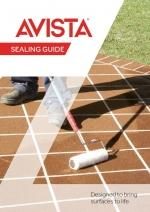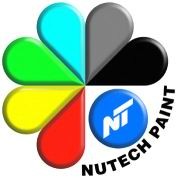
Concrete Resurfacing
Avista Resurfacing
As their motto states ‘designed to bring surfaces to life’ Avista’s resurfacing range has been formulated to transform plain concrete into an attractive, slip resistant finish. Avista’s resurfacing system is a spray on/trowel on applied cement-based compound that will generally be around 3mm thick. Prior to application, the existing concrete surface must be a minimum of 28 days old (new concrete), be structurally sound and clean. The standard application process involves surface priming, application of the Avista resurfacing compound to the desired effect and finally over coating with a solvent-based sealer for surface protection.
Further information is available via these links:
Avista Decorative Concrete
Avista Exterior Brochure
Avista Resurfacing Colours
Avista Base Compound Data Sheet
CCS Stylepave Concrete Resurfacing System
The CCS Stylepave resurfacing system is similar in application and composition to the Avista range.
For further information please view the links below:
CCS Decorative Concrete
CCS Stylepave Resurfacing System
CCS Stylepave Colour Chart
Epoxy Flooring
Our epoxy flooring options range from water-based single colour coatings through to metallic solvent-based designer floors. Our most popular option is the polymer flake floor (see brochures below).
Avista Interior Brochure
CCS Galaxy Flooring Brochure
This 3 part process involves the application of a binding layer (water-based 2 part epoxy – tint optional) that the polymer flakes are broadcast onto. Once 24 hours has elapsed, the excess flakes are removed and a 2-pack polyurethane sealer is applied for excellent gloss, longevity and protection. The process is further explained in detail below:
Avista Flake Technical Data Sheet
CCS Galaxy Flooring Technical Data Sheet
An economical alternative to the polymer flake flooring is tinted polyurethane sealer. This option provides the same outstanding performance in a single-pack colour. It is supplied by Nutech Paints and is available in solvent or water-based options.
Nutech Epic Polycryl Technical Data Sheet
Nutech Aquafloor Technical Data Sheet
Concrete Sealing
Concrete sealers are utilized to protect a wide variety of concrete finishes to provide ease of maintenance and enhance the finished surface. Typically most sealers are classed as ‘form filming’ as they provide a protective layer that binds to the concrete surface. An expected lifetime for this application is generally 12-24 months depending on environmental, traffic and weather conditions. Penetrating sealers are also available, and instead of forming the film layer, they bind to the capillaries and pores of the surface to achieve a natural finish. The lifetime of penetrating sealer is generally 36-60 months and are recommended for surfaces that have a high slip factor.
Application guidelines are consistent across the various surface conditions below:
| Old Unsealed Concrete | The surface should be prepared by first high pressure cleaning to remove all loose sediment and stains. Any remaining stains shall be treat with a detergent and re-washed with a high pressure cleaner. Acid etching is also required to prepare the surface for sealing. After the surface is thoroughly dry, apply a diluted (up to 20% solvent) to the surface via a broom, roller or sprayer to prime concrete for the top coat. The Top coat sealer is applied by the same method in 1-2 coats. Typically allow 24 hours between coats to avoid solvent entrapment (bubbling, whitening). The sealed surface should not be driven on for 72hrs. | |
| New Concrete | After the surface is firm enough to walk on, a same day sealer can be applied to protect the surface and also allow it to cure properly. After a minimum of 14 days, the same day sealer should be over-coated with a top coat sealer. This application is the same as the method noted above. | |
| Previously Sealed Concrete | The surface should be prepared using a general purpose cleaner and a high pressure wash to present a clean surface free from contaminants. If the existing sealer has aged more than 24 months, a solvent wash (the neat application of solvent to the sealed surface by roller) will need to be applied to reactivate the existing sealer in preparation for the prime and top coats. The prime and top coats are applied as outlined above. |
It is important to note that these are guidelines only, as provided by our suppliers. Accountability for incorrectly sealing surfaces does remain with the applicator. If the applicator is unsure of the correct process or the concrete surface requires additional preparation work, Caboolture Concretors Warehouse can assist by putting you in contact with the relevant technical department of the suppliers to confirm the correct course of action.
For further information please click on the relevant brand below for further technical information.


